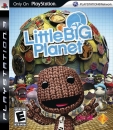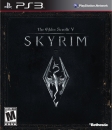ganoncrotch said:
You should look at the data source and think of what they were trying to suggest with the breakdown they presented, Onlive were trying to give them impression that retailers took a far greater slice of the cake for one thing so they could slip in the option of providing another means of getting the game from Publisher to the consumer, based on the fact that the onlive service failed, financially and from a market share point of view I think you should consider their breakdown of how the market works to have been flawed from the get go, as it has been said, no retailer makes $15 dollars from a new game. The only way at a stretch could you say that a retailer could make $15 dollars from a game sale would be if the game sold for $60 dollars with a $5 cut then since it is a physical game which can be resold they would assume the retailer buys it back at a point later down the line for $10 and resells it again for $20 making it up to $15 if you take out the overhead envolved in doing that move, again tho, main point is the Data came from a group who burned money like it was going out of fashion, shouldn't be quoted in a suggestion of good business ideas. |
A guy who worked at some retailer actually confirmed the 15 dollar thing himself in this very thread. (or he said it was pretty darn close anyway) But actually, the smaller the retailer cut is, the more financially beneficial it is to go 3rd party anyway
Imagine if the retailer cut was 35 (which it of course isn't). That would mean that there would be 7 dollars for each game sold as a third party, while they would get 14 dollars per game sold as a first party. So there you would need to sell twice as many copies as a third party vs first party. Now, if the retailers got nothing from each game sold (which also is an extreme, but I'm doing this to make the concept simpler), then that would mean Nintendo got 49 dollars per game sold (at 60 dollars) vs 42 dollars per game sold as a third party. In that case, they'd only need to sell 17 % more copies as a third part to make the same profit. So basically, the smaller the retailer cut the better.




















